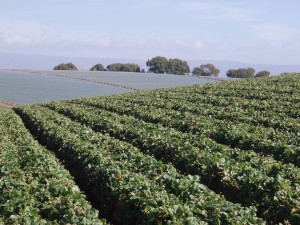Growers Talk Success with FlowControl Drip Irrigation
FlowControl drip irrigation is taking the ag irrigation industry by storm, creating an entirely new class of tapes. It is the only tape on the market that is a true flow-moderating drip tape.
Up until now, growers accepted the worries and woes of farming uneven terrain. Growers were forced to either accept the poor uniformity and lower yields, avoid the uneven areas altogether, or buy costly pressure-compensating driplines that limit growers’ control over the system application rates. But not anymore!
Toro FlowControl drip tape gives you the best features of a pressure compensating tape, and standard tape: More uniform irrigation for any terrain, and the flexibility to control the overall system flow rate. With FlowControl drip irrigation, you truly get the best of both worlds.
Growers Talk Success with FlowControl Drip Irrigation Read More »

 Vegetable growers in Florida are using plasticulture and drip irrigation best practices to improve water and nutrient management on more than 5,000 acres of production. And the effort is paying off, according to one Extension official familiar with the practice.
Vegetable growers in Florida are using plasticulture and drip irrigation best practices to improve water and nutrient management on more than 5,000 acres of production. And the effort is paying off, according to one Extension official familiar with the practice.